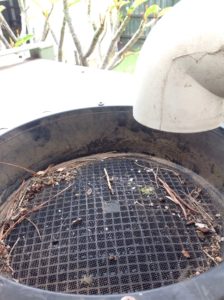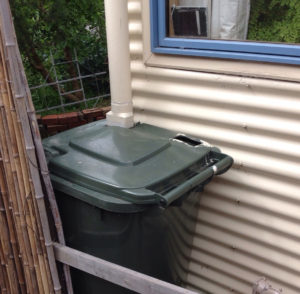As recently as the mid-1960s, domestic rainwater tanks were discouraged or even banned by some local councils in Australia because of concerns about environmental risks such as mosquito breeding. Between 1897 and 1955, Brisbane had 7 dengue outbreaks, and mosquitoes breeding in rainwater tanks were regularly found to be the cause. By the 1990s, almost no rainwater tanks remained in most of Australia’s urban areas.
How times have changed. Now, in response to severe drought and the prospect of a drier future, and spurred on by subsidies and regulation, at least 30% of homes in Brisbane, Melbourne, Adelaide and Sydney have a rainwater tank installed.
But with the proliferation of tanks in our cities comes an increased risk of outbreaks of mosquito-borne diseases. And now, unlike in the early part of the last century, tanks are not being regularly checked for mosquito breeding.
In a unique study, jointly funded by CSIRO and the Smart Water Fund, which represents the water industry in Victoria, a team of researchers inspected rainwater harvesting systems in a sample of Melbourne homes. The results, published this month in The Journal of Hydrology, took them by surprise—mosquitoes were found to be breeding in 21% of the systems inspected.
Unsealed overflows the biggest culprit
The team, led by CSIRO’s Dr Magnus Moglia, inspected rainwater harvesting systems at 417 sites across metropolitan Melbourne between February 2013 and August 2014.
As well as rainwater tanks, inspections covered the connected roof area, pumps, switching devices and filters. The homeowners were also surveyed about their tank maintenance attitudes and behaviours.

The most common access routes for mosquitoes were found to be the tank inlet and the tank overflow, either because there was no mosquito mesh covering the opening or the mesh was damaged.
Unmeshed overflows were the biggest culprit, representing about 60% of the mosquito-infected systems. This was despite good meshing of the inlet.
In about 22% of systems, the mesh on the inlet was in poor condition and this allowed the entry of mosquitoes to nearly the same extent as having no meshing at all.
Even with adequate mosquito meshing on both the inlet and the overflow, 5% of tanks still had mosquitoes breeding in them.
“How the mosquitoes are gaining entry to these tanks requires more detective work,” explains Dr Moglia. “There could be a hole in the mesh or perhaps the mesh is not sitting properly.”
Wet systems are more of a risk and harder to check, he adds. In a wet system, pipes from the gutter run down the wall, under the ground, and up into the tank. The pipes can hold stagnant water that could become a habitat for breeding mosquitos.
Blocked gutters can also cause water to pond, providing a breeding site for mosquitoes, with the eggs being washed into the tank.
The rise of rainwater tanks to combat drought
The rise in the number of rainwater tanks in Melbourne stems from their enthusiastic promotion by the Victorian Government and by water utilities during the Millennium Drought. And in 2005 the government introduced their five-star building regulations which require all new homes to have either a solar hot water system or a rainwater tank connected to the toilet.
The effect of these two drivers was such that, by 2013, 31% of households in metropolitan Melbourne had rainwater tanks. Similar rates of adoption are reported in Brisbane, Adelaide and Sydney. Rebates offered by Brisbane City Council resulted in more than 90,000 rainwater tanks being installed across the city.
A public health warning flag
The results of the study are a serious concern for health officials in Melbourne and a warning flag for other capital cities, says Dr Moglia.

“To me, having 21% of tanks infected with mosquitoes was quite shocking,” he says. “And, from what I’ve seen, the setup is not significantly different in Queensland. So this is something that needs to be looked at to see whether the same risk exists in other states.”
To put the figure in context, explains Dr Moglia, the Queensland Government has previously stated that an acceptable threshold for infected rainwater harvesting systems is 1% because of the risk of a dengue outbreak.
CSIRO Research Director Dr Simon Toze believes that public health officials will be concerned about the findings, which he has recently discussed with senior Queensland officials.
“A lot of people, especially in south-east Queensland, think the problem is up in the north. But with the changing climate, we need to make sure people realise this could also become a problem in New South Wales, it could a problem further south— this is about everyone’s backyard.
“Health officials in Queensland are aware of the potential problem—they know it’s a potential time bomb. This just raises the profile of the situation,” says Dr Toze.
Warmer climate raises risk of mosquito migration
The risk of mosquito-borne disease is dependent on its prevalence in particular locations.
In south-eastern Australia, three significant mosquito-borne diseases have been identified.
Ross River Virus disease and Barmah Forest Virus disease are endemic throughout parts of Victoria and can be debilitating but not fatal. Epidemics of Ross River Virus tend to follow heavy rain and floods, often with a lag time of 3–4 months. Temperature is also shown to be significantly correlated with prevalence of Ross River Virus. A significant outbreak of Barmah Forest Virus occurred in Victoria in 2002 and was associated with wetter than average weather.
Australian Arboencephalitis, which can be fatal, occurs in northern Victoria in epidemics, with the last outbreak recorded in 1974.
As the global climate continues to warm, the risk of these mosquito-borne viruses migrating from northern Victoria is likely to increase, although how this will change depends on a complex interaction of local temperatures, rainfall patterns, availability of breeding sites, and any interactions between humans (or animals) and the disease carriers.
Further north, malaria, and viruses such as dengue and Zika virus which are carried by the Aedes aegypti mosquito, are of particular concern.
How to keep mosquitoes from breeding in your tank
Mosquitoes usually lay their eggs on water surfaces or wet vegetation and require standing water to complete their 14-day life cycle. Rainwater tanks offer the perfect habitat for breeding.
6 tips for keeping mosquitoes from breeding in and around your tank
Seal both the inlet and the overflow with proper mosquito mesh, which is available from any hardware store.
Mosquitoes need standing water to be able to complete their 14-day lifecycle. - Poor meshing is as bad as no meshing, so check it regularly and replace the mesh if it is damaged or not well fitted.
- Remember that sealing the overflow can reduce the incidence of mosquitoes by two-thirds—even if the inlet is poorly sealed.
- If your overflow water pools on an open grassy area, this can be a breeding ground for mosquitoes. Ideally, your overflow water should be diverted to a covered drain.
- Keep gutters clear of blockages. Mosquitoes can breed in small pools of water that form in a blocked gutter. The eggs can then be washed into the tank.
- Inspect the whole system regularly.
Fixing the problem is not about changing the technology, says Dr Moglia.
“If you think about the money and effort that the community has invested in these systems, it’s massive. And there’s nothing wrong with the technology. But we shouldn’t be blind to the fact that we need to manage risks.
“We don’t want to go back to the problems of the 1920s in Brisbane with dengue outbreaks or the 1960s where we were taking out the tanks. It’s an easy fix, so it seems like a real shame not to do it.“
